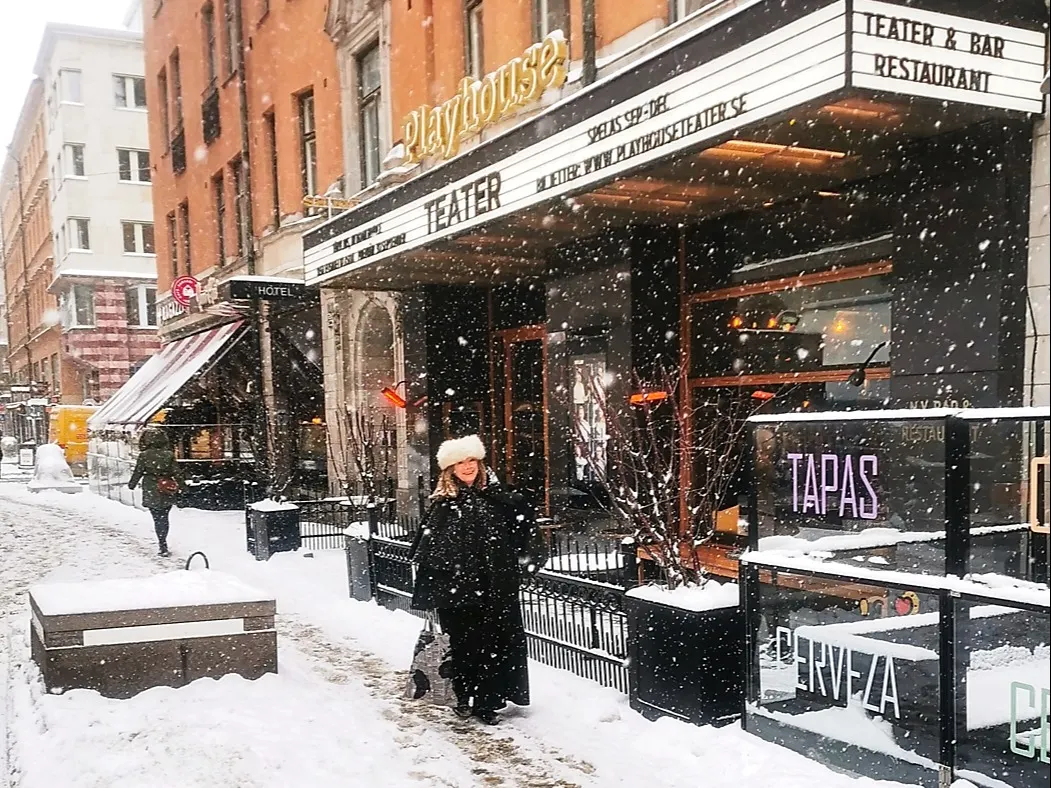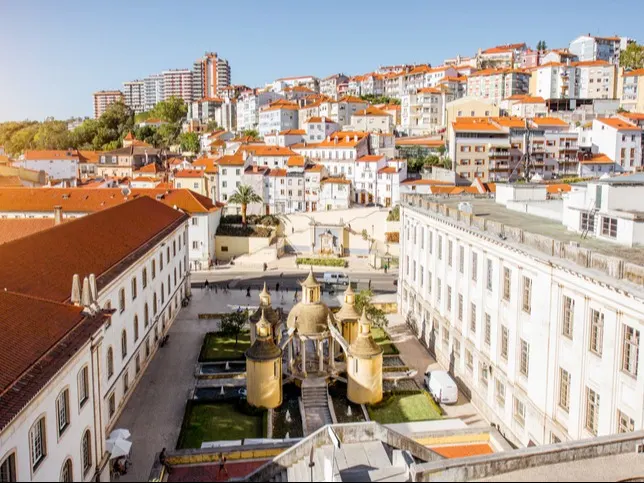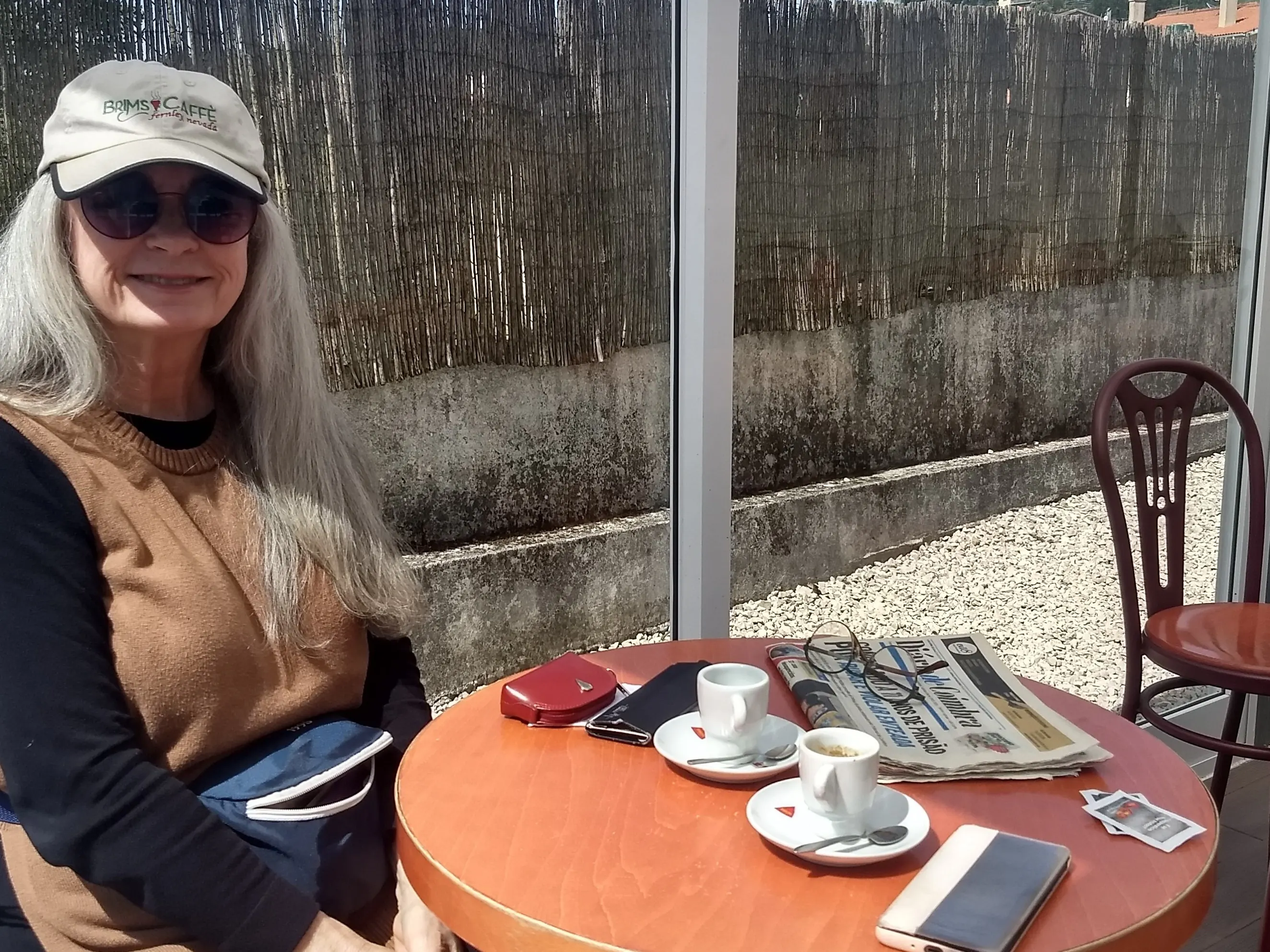The moment we decided to return to Portugal is indelibly etched in my mind. On a gray and blustery March morning last year, my husband shoved open the front door of our Swedish farmhouse and dumped yet another load of firewood into the huge chest we kept in the entryway. We knew those logs would be burned before long, and with another storm on the way, it was important to stack as much as possible before the flakes flew again. I came to the kitchen doorway and looked at my beleaguered spouse, who then made his official—and life-changing—pronouncement: “I cannot face a fourth winter here.”
Where would we go? Family and friends in the States asked us to return. Despite the draw of children in Southern California, a Social Security budget cannot support that lifestyle. Our option was clear—a return to our beloved Portugal. We wanted to be near friends, good healthcare, and shopping, and away from both beach cities and the damp, chilly north. That translated to Portugal’s first capital: the university town of Coimbra.
Get Your Free Portugal Report Today!
Get Your Free Portugal Report Today!
Discover why we love a slower pace of life in Portugal and info on other European countries in our daily postcard e-letter. Simply enter your email address below and we’ll send you a FREE REPORT – Explore the Old World in Laidback Portugal.

By submitting your email address, you will receive a free subscription to IL Postcards, Overseas Dream Home, The Untourist Daily and special offers from International Living and our affiliates. You can unsubscribe at any time, and we encourage you to read more about our Privacy Policy.
When we first moved to Portugal in 2012, we lived near Porto, where we were able to get the requisite long-term rental for residency. A year later, we decided to make learning Portuguese a priority, and that led us to live near Coimbra so we could take an immersion course at its world-renowned university.
Later, we were drawn south to Mafra. About 30 miles west of Lisbon, it was close to the airport and offered fine cultural sites, shopping and restaurants, and a solid church. But even in 2017, we found that we were unable to afford to purchase a home with property in that area, so we went back to central Portugal, in the countryside of the Castelo Branco district. There, we were able to satisfy our desire to live in “real Portugal,” not a tourist version of Iberian life, and own a home that is complete with fruit trees and a (very) small vineyard.
We might still be living at Quinta dos Sonhos, as we called our “Estate of Dreams,” had it not been for the illness of my husband’s former employer, which had a negative impact on our income. But it was the pandemic that prompted us to leave the country entirely. While Portugal became locked down and restrictive, Sweden’s approach was open and free. That country’s major response was to close restaurants earlier than usual at night. Schools remained open, and no masks were required, although hand sanitizer and reminders to keep a safe distance appeared at entrances to all public buildings.

Choosing Coimbra: Climate, Affordability, and Lifestyle
In central Sweden, we were quite isolated, with the nearest big town an hour away and, in essence, no neighbors at all. So, as noted above, one important factor when we returned to Portugal was to live near long-time friends. A second was to have access to good healthcare, as last year, it became evident that a hip replacement was on my horizon. Coimbra has multiple hospitals and healthcare facilities. Combined with well-designed malls, excellent eateries, and the availability of organic grocery shopping, it made for an ideal choice.
The clincher was that, in fact, Coimbra chose us, not the other way around. We had been looking for a long-term rental for a couple of months. One day, while we were house hunting, we saw an ad appear on a site for a three-bedroom, three-bath home above the hills of Coimbra. It had been listed only a few hours before. The views were lovely, and when I saw the guest room with wallpaper depicting a nighttime view of the Brooklyn Bridge in my native New York, I knew we had to have it.
We called and were told there had been a number of inquiries already, and someone was going to see it the following day. We would only have a chance to see it if they did not rent it. I ended the call and burst into tears. Comfort food was in order. One grilled cheese (tosta de queijo) and an ice cream sandwich later, my cell beeped. It was the owner, saying she couldn’t explain why—this had never happened to her before—but she felt an overwhelming urge for us to see the house, and it was ours if we wanted it. And we did. That experience in and of itself will forever endear this area to me, but my love affair had begun long before.
My first impressions of Coimbra in 2013 embodied all that is remarkable about this country: the streets a maze of cobblestones and traditional Portuguese black and white calçadas; Romanesque, Gothic, Manueline, and Renaissance influences in churches, homes, schools, and government buildings; eclectic juxtapositions of boutiques and bars with monasteries and monuments. And crowning it all, the blue ribbon of the River Mondego serenely passing through the midst of the vibrant city surrounding it.

First occupied by the Celts, Coimbra’s Roman roots go deep, as evidenced in archaeological ruins under the National Machado de Castro Museum, just a stone’s throw from the University of Coimbra in the upper region of the city known as the Alta. The country's capital from 1139 until 1260, the city was the birthplace of six medieval kings. Coimbra so enthralled me that in early 2020, I created a walking tour for Secret City Trails called “Coimbra: Cathedrals, Kings, and Calla Lilies”. When we left for Sweden, I turned over maintenance of the game to others, but it’s still in operation and continues to delight players who want to learn about Coimbra’s past and present.
Cost of Living: Comparing Coimbra to Lisbon and Los Angeles
According to Numbeo, the cost of renting is almost 50% lower in Coimbra than in Lisbon. One-bedroom apartments average around $750 a month, and three-bedroom rentals about $1,300. We pay 1,150 euros, about $1,135 per month, for our three-bedroom, 2.5-bath house on about .25 acres of land.
Apartments, condos, townhouses, and standalone homes are all possible. Moving away from the city center reduces these costs by a few hundred dollars. The numbers are even better when compared with Los Angeles, where rents are 70% more expensive than in Coimbra. Equal savings can be found in terms of restaurant expenses: 60% lower in Coimbra than in L.A., and groceries are about half the price in Coimbra compared to SoCal.
We found the cost of living comparable but different between Sweden and Portugal. In Sweden, energy was more expensive, food prices were about the same, and real estate was cheaper. Then again, we were deep in the countryside, with bears, moose, and foxes our closest neighbors. Living in the capital, Stockholm, one may have to spend $3,000 a month to rent, and in Lisbon, you can find rentals that are double, triple, and more than those in Coimbra.
Daily Life in Coimbra: Community, Friends, and Activities
Once or twice a week, we leave our sleepy neighborhood, which consists of several cafés, a grocery store/café combo, a modest restaurant, and a church, and head down the hill to Coimbra proper. On the way, we pass a convenient miradouro and sometimes pull over for a moment just to admire an expansive view of the city. The folks in town—store owners, pedestrians, fellow shoppers- are every bit as warm as our neighbors, who smile and wave and bring us boxes of lemons and oranges from their property, as well as homemade wine and bread.

In our suburban locale most activities center on walks on forest trails, but we are also determined to find an area suitable in our nearby park to play my favorite outdoor game, pétanque, learned years ago in France. We also check the bulletin board at the grocery store regularly, where news of community sardine dinners ($11 per person, all-inclusive) and local fado performances are posted. Two flat-screen TVs, one inside by the cash register and one outside on the covered patio, give us the news (or a Portuguese program not unlike Judge Judy) while we enjoy an afternoon coffee or ice cream.
As far as cultural events go in Coimbra itself, a marvelous source is its prestigious university, and specifically its student union, the Associação Académica de Coimbra (AAC). The oldest student union in Portugal, the AAC’s cultural sections promote events, workshops, and courses for both students and the city community. Those departments, or sections, include theater, musical groups, cinematography, journalism, television, and more. The AAC even operates its own radio station. There are also numerous sports sections, including rugby, volleyball, basketball, and Olympic sports, such as athletics and martial arts disciplines. Even their chess team shines and, on occasion, has taken the number one spot in Portuguese competitions.
The AAC also organizes one of the largest student festivals in Europe, the eight-day Queima das Fitas, or “Burning of the Ribbons,” as the graduating class celebrates the close of the academic year. One ribbon is burned each night for eight nights, representing the University’s faculties: Humanities, Law, Medicine, Sciences and Technology, Pharmacy, Economics, Psychology and Education Sciences, and Sports Sciences and Physical Education. A parade, concerts, gala ball, and historic nighttime fado serenade held on the steps of the Old Cathedral invite the participation of thousands of students, locals, and tourists.
Balancing the often-frantic UC activity and events, within less than two square miles of it, are many places to peacefully relax in nature. The University’s Botanical Gardens are just an eight-minute walk from campus. Other quiet zones include the Penedo da Saudade, the legendary grounds of the five-star hotel Quinta das Lágrimas, Parque Verde do Mondego, and Choupal National Forest. A 20-minute drive from the University along N17 and N110 will take you to a river beach—Praia Fluvial de Palheiros e Zorro—where you can spend the day swimming, picnicking, canoeing, or kayaking.
With all there is to do and see here, sometimes it’s tempting to feel we’re simply on vacation. That, combined with the fact that we are renting now instead of owning as we did in both Portugal and Sweden, lends itself to a slight sense of impermanence. One thing we know for sure is, final destination or not, Coimbra is a jewel to be discovered in depth and savored at leisure.
Get Your Free Portugal Report Today!
Get Your Free Portugal Report Today!
Discover why we love a slower pace of life in Portugal and info on other European countries in our daily postcard e-letter. Simply enter your email address below and we’ll send you a FREE REPORT – Explore the Old World in Laidback Portugal.

By submitting your email address, you will receive a free subscription to IL Postcards, Overseas Dream Home, The Untourist Daily and special offers from International Living and our affiliates. You can unsubscribe at any time, and we encourage you to read more about our Privacy Policy.
